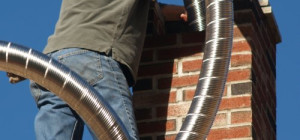 For so many people, the majesty and gracefulness of a horse in motion is pure poetry. We spend hours of our time and thousands of our dollars enjoying ourselves with these great animals. From working horses like those found on huge ranches or in uniform like those in the Royal Canadian Mounted Police to the pleasure trail mounts to the race track athletes, horses are a unique combination of usefulness and mysteriousness. There are so many ways humans can either positively or negatively impact these beautiful creatures and one way, in particular, is by paying attention to how what we do affects a horse’s legs.
For so many people, the majesty and gracefulness of a horse in motion is pure poetry. We spend hours of our time and thousands of our dollars enjoying ourselves with these great animals. From working horses like those found on huge ranches or in uniform like those in the Royal Canadian Mounted Police to the pleasure trail mounts to the race track athletes, horses are a unique combination of usefulness and mysteriousness. There are so many ways humans can either positively or negatively impact these beautiful creatures and one way, in particular, is by paying attention to how what we do affects a horse’s legs.
Youthful Exuberance
The focus on the legs is not a new idea in horse racing news, but the ideas behind what we feed our horses in their youth having a lasting impact beyond their first year is becoming more common knowledge. It’s also influencing how human athletes look at ligament health. Most times, the focus on the legs, especially the ligaments and joints, is a discussion older athletes or their trainers have with their doctors and physical therapists. What people are discovering, though, is something the world of horse racing has known: good joint health begins with good nutrition during growth and development.
With horses, good nutrition is key to good ligament health. Since the ligaments are crucial to a horse’s overall health, a lot of attention has been paid to this area of study over the years. Scientists are discovering that what a horse’s ligaments need is similar to what people generally need. Even though the sources may be different, both humans and horses need a good supply of protein, amino acids, calcium, phosphate and Vitamins D, E and A. Don’t forget that frequent exercise is important, too.
Age Brings New Technology
Despite most racing horses’ careers finished at six or seven years old, there’s still a lot of life in them as many horses reach the age or 25-30 before they cross the rainbow bridge. With racing being so tough on a horse’s ligaments, owners and trainers have always kept a close eye on a horse’s legs during their retirement.
The newest ally in the fight to keep our horses healthy comes from the field of stem cell research. North Carolina State University recently published a study that finds treating adult equine stem cell donations with a certain growth factor polypeptide will allow it to be introduced into the horse’s system without activating the immune system responses. This is a big benefit for the treatment of ligament and tendon injuries or stress. Researchers didn’t use to think that stem cells needed to be matched from donor to recipient, but that isn’t the case. Failure to match the two triggers the immune response in the recipient, which kills the stem cells thereby preventing them from doing their job of igniting the body’s repair and healing factors.
The specific stem cells in the study, mesenchymal stem cells, have been utilized in the past to successfully treat tendon and ligament damage in horses. The fact that scientists now know this polypeptide will allow them to bypass the body’s natural immune response means that they won’t have to match the donors to the recipients. This will shorten the length of response and treatment time greatly and promote the ease of this remedy for a horse’s ligament and tendon damage. There is also hope that this breakthrough will work for humans, as well. While this study is only in its beginning stages, it’s worth keeping an eye on stem cell research to aid in the body’s recovery from injury and stress for both horses and people.
People have learned quite a bit about their own health by ensuring the health of our animals.







